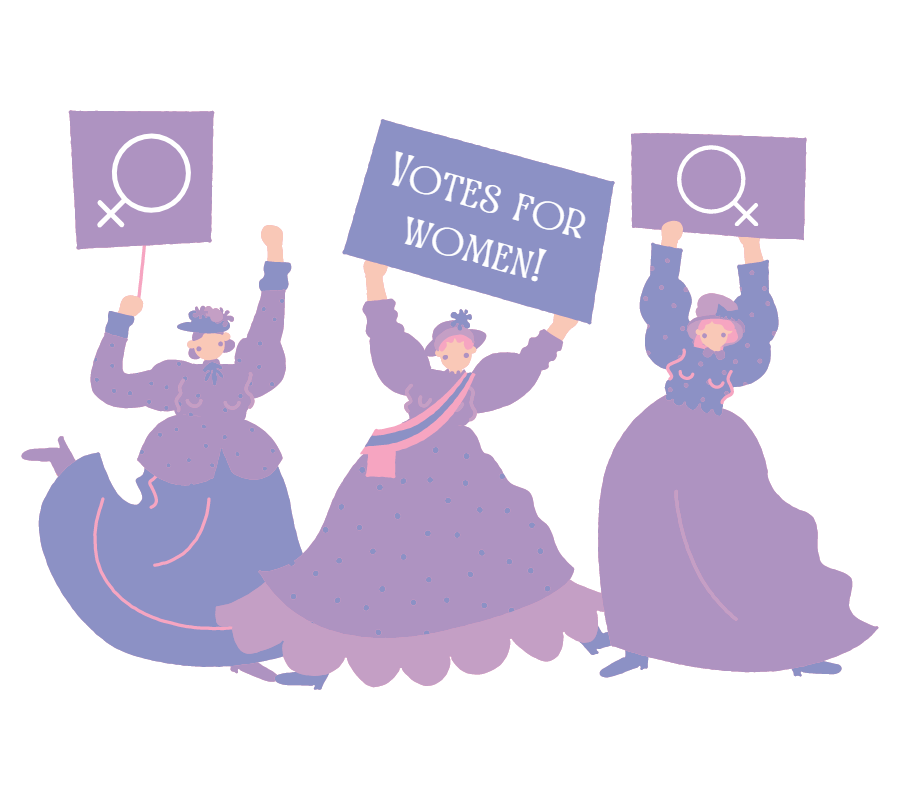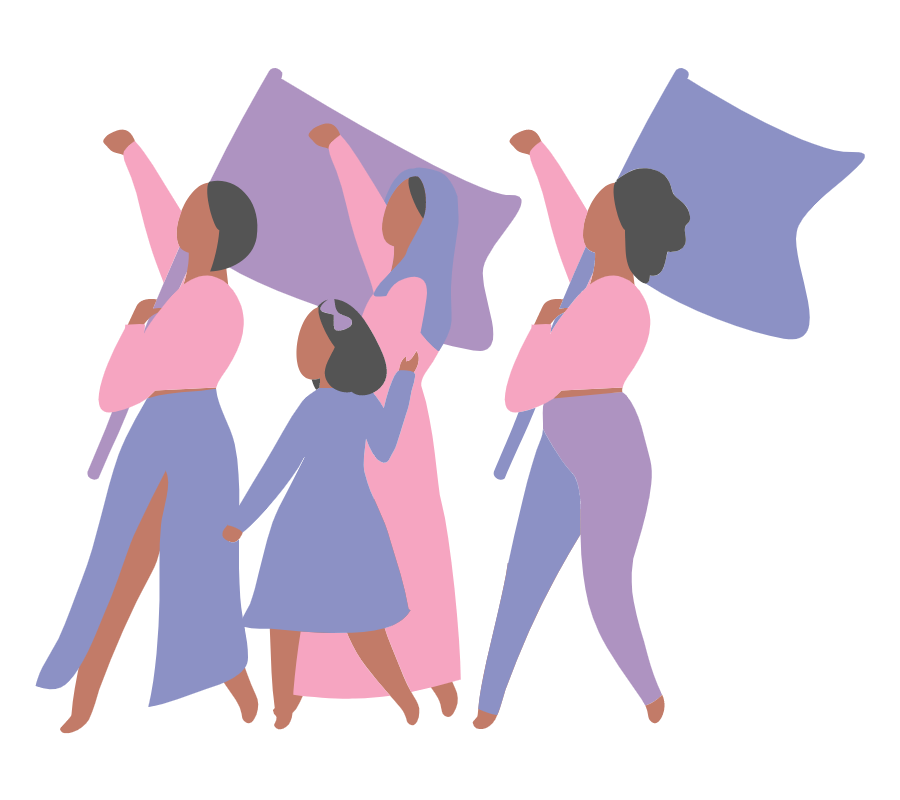What was Women’s Suffrage?
The women’s suffrage movement was the hard-fought battle for nationwide gender equality. For centuries, women were denied basic rights, such as property ownership and voting. It wasn’t until the late 1800’s and early 1900’s that women had gained enough freedom to organise and fight for their rights.
In this blog post, we will take a journey through time and explore the key events that shaped the women’s suffrage movement in the UK. From the very first petition in 1832 to the peaceful campaigning methods of the NUWSS, and finally, to the militant tactics of the WSPU. Let’s dive in and discover the remarkable story of British gender equality…
1832: The First Recorded Petition
The very first recorded moment in the UK’s suffrage movement dates back to 1832 when a Yorkshire woman petitioned for the same rights as her male counterparts. This petition marked the beginning of a long and difficult struggle for women’s rights in the UK. The petition called for women to have the right to vote, which was a privilege only granted to men at the time. This bold move sparked a movement that would change the course of history for British women.
Although this petition was not successful, it laid the foundation for future efforts to secure equal rights for women. From this first recorded moment, women continued to petition and campaign for their rights, culminating in the historic achievement of the right to vote.

1870: The Married Women’s Property Act
A significant moment in the movement occurred in 1870 when the Married Women’s Property Act was passed. This legislation allowed women to own property and have their own money for the first time. Though, it was not a complete victory, as it still required women to be married to be eligible for these rights.
Despite this limitation, the act was a crucial step towards gender equality and marked a turning point in the struggle for women’s rights in the UK. The Married Women’s Property Act provided women with a newfound sense of financial independence and autonomy, enabling them to take control of their lives in ways that were previously impossible. It laid the foundation for future reforms that would eventually lead to women gaining equal rights under the law.
1897: The National Union of Women’s Suffrage Societies
Later in the 1800’s, Millicent Fawcett emerged as a prominent leader in the UK’s women’s suffrage movement. Fawcett was a noted educator and writer, who also happened to be the wife of the prominent MP, Henry Fawcett. In 1897, she became the President of the National Union of Women’s Suffrage Societies (NUWSS), a group that was instrumental in advocating for women’s rights in the UK. Unlike the more militant Women’s Social and Political Union (WSPU), the NUWSS favoured peaceful and legal campaigning methods, such as Parliamentary Bills and Meetings, to achieve their goals.
Under Fawcett’s leadership, the NUWSS organised numerous campaigns and petitions to promote women’s suffrage. While their approach was more measured than the WSPU’s, the NUWSS was no less effective in raising awareness and building momentum for women’s rights. Fawcett and her colleagues played a critical role in advancing the cause of women’s suffrage, helping to pave the way for the historic changes that were to come.

1903: The Women’s Social and Political Union
The Women’s Social and Political Union (WSPU) was formed in Manchester in October 1903, in response to the growing frustration felt by women’s rights activists at the lack of progress being made towards gaining women the right to vote. The founders of the WSPU were Emmeline Pankhurst and her daughters, Christabel and Sylvia.
At the time, women in the UK were still not allowed to vote in national elections, and the suffrage movement had been campaigning for decades for women to be granted the same rights as men. However, progress had been slow and many felt that a more direct approach was needed. The WSPU’s motto was ‘Deeds not words’, reflecting their belief that forceful action was necessary to bring about change. They began organising rallies, marches and demonstrations. Though soon they gained a reputation for their aggressive tactics, which included smashing windows and chaining themselves to railings.
Even with opposition from some members of the suffrage movement, the WSPU continued to push for their cause, and their actions helped to bring greater attention to the issue. While it would be several more years before women were finally granted the right to vote in the UK, the WSPU’s efforts played a significant role in the eventual success of the suffrage movement.
Emmeline Pankhurst and the WSPU
Emmeline Pankhurst is one of the most well-known suffragettes, having become involved in the cause as early as the 1880’s. In 1903, Pankhurst founded the WSPU, further cementing her determination to secure the right to vote for women. Pankhurst was arrested numerous times for her activism, as were her daughters Christabel, Sylvia and Adela, who were also WSPU members. The WSPU’s tactics were controversial, and many of its members, including Pankhurst, took part in hunger strikes while in prison.
The government’s response to these hunger strikes was to force-feed the women, a practice that was widely condemned as brutal and inhumane. In the face of this government resistance, the WSPU fought on. The sheer number of hunger strikes eventually led to the introduction of the so-called ‘Cat and Mouse Act’. Under this legislation, hunger strikers in prison were released when they became too weak to continue, only to be recalled back to jail once they had regained their strength. The aim of this was to avoid the negative publicity that came with the force-feeding of prisoners.
Emmeline Pankhurst’s dedication to the cause of women’s suffrage was unwavering, and her activism helped to bring greater attention to the issue. The numerous challenges and setbacks she and the other WSPU members faced did little to dissuade them. They persisted in their efforts, and paved the way for the historic changes that would eventually come about.

Women’s Sunday
On the 21st June 1908, the largest demonstration the UK had ever seen at that point took place in London, organised by the WSPU. This became known as ‘Women’s Sunday‘. The event saw 500,000 men and women in attendance, making it a significant milestone in the history of the women’s suffrage movement.
30,000 women marched to Hyde Park in seven processions, carrying an impressive 700 banners. The iconic WSPU colours of purple, white and green were featured publicly for the first time, which were later to become symbolic of the suffrage movement. Women were encouraged to wear white to symbolise purity and the seriousness of their demands. Prominent figures in attendance include Emmeline, Sylvia and Christabel Pankhurst, as well as Emmeline Pethick-Lawrence, Elizabeth Wolstoneholme-Elmy, and Annie Kenny. These women played a critical role in the suffrage movement, and their presence at the demonstration helped to further raise awareness and support for the cause.
The sheer scale of the event, along with the peaceful nature of the march, helped to change the public opinion towards the suffragettes. It also showed that women were not willing to back down in their demands for equal rights and led the way for further activism and progress in the years to come.
The Triumph of Women’s Suffrage: A Conclusion
The timeline of women’s suffrage in the UK is, as we’ve found, long and complex. With countless milestones and setbacks along the way, it is marked by decades of hard work and activism by so many brave women and men. Despite opposition from the government and society at-large, the suffragettes ultimately succeeded in securing women the right to vote.
The Representation of the People Act of 1918 extended the right to vote to women over the age of 30 who met certain property qualifications. It was not until the Equal Franchise Act of 1928 that women were finally granted equal voting rights with men (all men and women over 21 years of age).
The long and arduous struggle of the suffragettes cleared the way for future generations of women to achieve greater equality and opportunities. Today, women continue to fight for their rights in many areas. Including equal pay, reproductive rights, and representation in government and other positions of power. In summary, the timeline of women’s suffrage in the UK is testament to the power of persistence and the importance of fighting for what is right.
Thanks to the tireless efforts of suffragettes and suffragists, women have achieved significant progress towards equality, and we must continue to build upon their legacy to achieve a better future for all.

0 Comments